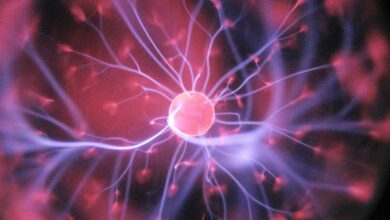Unlocking the Secrets: How Motivation Works in the Brain and the Science Behind It
Introduction
Motivation is a powerful force that propels us toward our goals and ambitions. Whether it’s the drive to excel at work, stay committed to a fitness routine, or pursue personal growth, understanding how motivation works in the brain is essential. In this comprehensive article, we will delve deep into the science behind motivation, uncovering the mysteries of what fuels our desires and determination.
How Motivation Works in the Brain and the Science Behind It
Motivation, at its core, is a complex interplay of neural processes, psychology, and external factors. To truly grasp its inner workings, we’ll break down this topic into several intriguing facets.
The Brain’s Motivation Center
Our journey into understanding motivation begins within the brain itself. The brain’s motivation center primarily resides in the ventral tegmental area (VTA), a small region deep in the brain. This area is responsible for releasing the feel-good neurotransmitter dopamine when we experience rewards, pushing us to seek more of those pleasurable experiences.
Dopamine, often referred to as the “reward neurotransmitter,” plays a pivotal role in motivating our actions. It acts as a signal that reinforces behavior, making us more likely to repeat actions that lead to rewards. The anticipation of these rewards sparks our motivation, driving us to pursue our goals relentlessly.
The Role of Neurotransmitters
Motivation is not solely dependent on dopamine; other neurotransmitters also play crucial roles. Serotonin, for instance, regulates mood and can influence our motivation levels. An imbalance in serotonin levels may lead to decreased motivation and even depression.
Furthermore, norepinephrine, responsible for the fight-or-flight response, can enhance motivation during challenging situations. Understanding how these neurotransmitters interact provides valuable insights into how motivation is regulated in the brain.
Motivation and Goal Setting
Setting clear and achievable goals is fundamental to sustaining motivation. When we establish specific objectives, our brain’s reward system becomes activated. This activation fuels our determination and perseverance as we work towards those goals.
Intrinsic vs. Extrinsic Motivation
Motivation can be categorized into two main types: intrinsic and extrinsic. Intrinsic motivation stems from inner desires and a genuine interest in an activity. In contrast, extrinsic motivation is driven by external rewards or punishments.
Understanding which type of motivation fuels your actions can help you harness and sustain your drive more effectively. Cultivating intrinsic motivation often leads to more enduring and satisfying results.
The Science of Habit Formation
Habits play a significant role in motivation. When we develop positive habits, our brain’s reward system reinforces them, making them easier to maintain. Breaking down larger goals into smaller, manageable habits can significantly boost motivation.
Overcoming Motivational Challenges
Even the most motivated individuals encounter obstacles. Understanding common challenges such as procrastination, self-doubt, and burnout empowers us to devise strategies to overcome them. Motivation isn’t always constant; it fluctuates, but there are ways to reignite your determination.
FAQs (Frequently Asked Questions)
Q: What are some practical strategies to boost motivation?
A: Incorporating daily affirmations, setting SMART goals, and practicing self-compassion can be effective ways to enhance motivation.
Q: Can motivation be sustained in the long term?
A: Yes, by developing intrinsic motivation, setting clear goals, and maintaining positive habits, motivation can be cultivated for the long haul.
Q: How does the brain differentiate between short-term and long-term rewards?
A: The brain weighs the immediate pleasure of short-term rewards against the delayed gratification of long-term ones, with the motivation center influencing the decision-making process.
Q: Is it possible to rewire the brain for increased motivation?
A: Yes, neuroplasticity allows the brain to adapt and change over time. By consistently practicing motivational strategies, you can reshape your brain’s pathways.
Q: Can external factors affect motivation?
A: Absolutely, factors like social support, environment, and stress levels can impact motivation significantly.
Q: What’s the connection between motivation and mental health?
A: Motivation can influence mental health and vice versa. Maintaining motivation can aid in managing conditions like depression and anxiety.
Conclusion
In our quest to understand how motivation works in the brain and the science behind it, we’ve uncovered the intricate neural mechanisms, the role of neurotransmitters, and practical strategies for staying motivated. Motivation isn’t a one-size-fits-all concept; it’s a dynamic force shaped by biology, psychology, and our environment. By applying the knowledge gained here, you can take charge of your motivation, turning aspirations into achievements.
============================================


